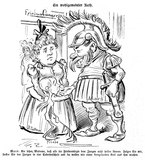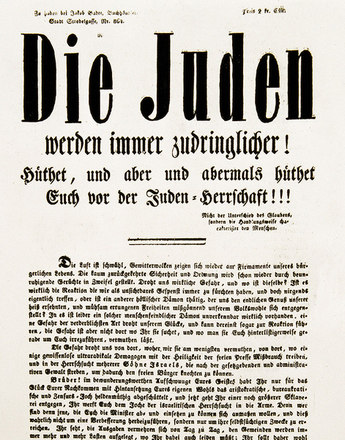Alfred H. Fried and the peace movement during the war – censorship and derision
When the First World War broke out in July 1914, Alfred H. Fried wrote the following lines in the August/September 1914 issue of his pacifist magazine Friedens-Warte: “In the spirit of Clausewitz, we can say that war is the continuation of peace work, but with other means. […]. For decades we have been carrying out dedicated work to achieve this goal, gladly devoting our energies to it. We can say with a clear conscience that we have done our duty. We have not suffered a defeat, as our opponents triumphantly claim.”
Since July 1914, the Austrian Peace Society had been in a difficult situation because of the rigorous censorship in Cisleithania. As all pacifist agitation and publications were officially banned, the Society had basically to cease its activities. Alfred H. Fried, Bertha von Suttner’s closest collaborator, emigrated in 1915 to Switzerland, where he attempted during the war years to continue publishing Friedens-Warte. He had founded his own magazine after the ÖFG stopped publishing its mouthpiece Die Waffen nieder (1899). The first issue came out in July 1899, and it still exists today. At the time, it was the most important medium and forum for pacifist ideas and activities in the German-speaking world and remains so to this day.
Alfred H. Fried worked closely with the ÖFG and the German Peace Society, which he helped set up in 1892, but was critical of these organisations. Unlike Bertha von Suttner, for example, he believed that it would not be useful to establish and consult arbitration courts until after the founding of an international organisation. Moreover, according to his idea of “causal pacifism”, pacifists should address themselves to the causes of war, which in his opinion were to be found deeply anchored in the structures of society.
Fried also opposed the prevailing nationalism he observed in the German Empire and Austria-Hungary and was one of the few people who believed that the outbreak of war in 1914 could have been avoided.
In the years before and during the First World War, pacifists were vehemently discredited from various sides. They were described as “sentimental”, “soft” and “womanish”, and their pacifist concepts and ideas were dismissed as unrealistic and utopian dreaming. These were accompanied in Fried’s case by anti-Semitic comments, so much so that some of his colleagues suggested that he should convert to Christianity for the peace movement.
Translation: Nick Somers
Gütermann, Christoph: Die Geschichte der österreichischen Friedensbewegung 1891-1985, in: Rauchensteiner, Manfried (Hrsg): Überlegungen zum Frieden, Wien 1987, 13-132
Tuider, Bernhard: Alfred Hermann Fried. Pazifist im Ersten Weltkrieg. Illusion und Vision, Diplomarbeit, Universität Wien, Wien 2007
Tuider, Bernhard: Alfred Hermann Fried – ein Adlatus oder Inspirator von Bertha von Suttner? Neue Perspektiven auf die Beziehung zweier Leitfiguren der österreichischen Friedensbewegung, in: Marianne Klemun (Hrsg.): Wiener Zeitschrift zur Geschichte der Neuzeit, 2009/2: Wissenschaft und Kolonialismus, Innsbruck 2009, 134–162
Quotes:
„In the spirit of Clausewitz …“ : quoted from: Alfred H. Fried (Hrsg.): Die Friedens-Warte für zwischenstaatliche Organisation, A. H. Fried, Der Krieg, Jg. XVI., Heft August/September 1914, 281
„[…] convert to Christianity for ...“: Tuider, Bernhard: Alfred Hermann Fried. Pazifist im Ersten Weltkrieg. Illusion und Vision, Diplomarbeit, Universität Wien, Wien 2007, 43
-
Chapters
- “Lay down your arms” – Bertha von Suttner, the most prominent Austrian peace activist
- ‘The Austrian Society of Friends of Peace’– a brief episode?
- Alfred H. Fried and the peace movement during the war – censorship and derision
- ‘The League of Austrian Women’s Associations’ and the end of peace activities
- The Hague or the “betrayal” of the warring nation
- ‘… and tomorrow we will start cheerily canvassing for peace.’
- Peace and social issues
- The idea of the ‘peace-loving woman’?
- Peace and the Church – Thou shalt not kill!
- Peace and language – peace and the Esperanto movement
- Para Pacem – an Austrian peace movement with a difference
- Individual peace initiatives – Julius Meinl and Heinrich Lammasch
- ‘… surely this war must end some time?!’







